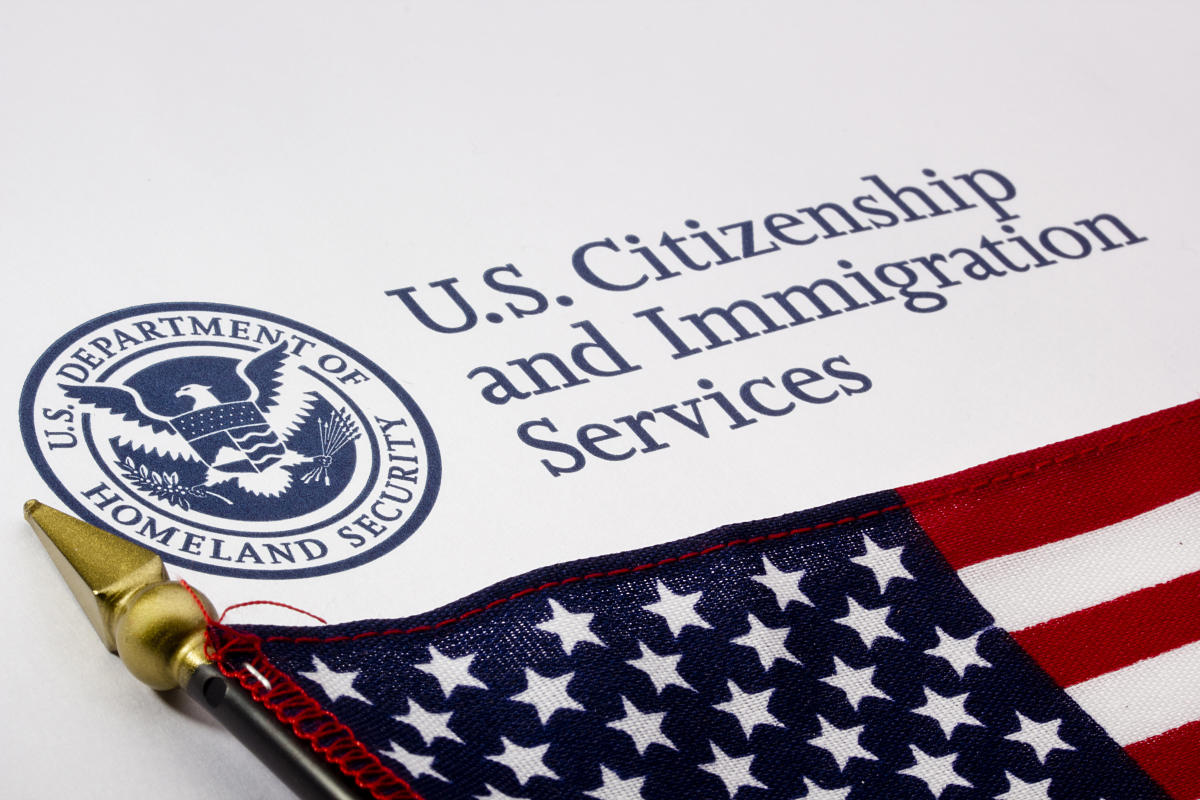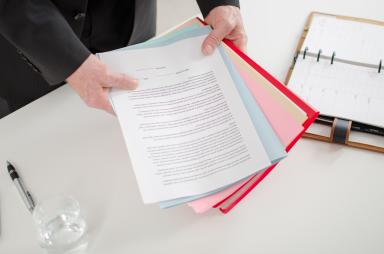How To Handle a Request for Evidence From USCIS

Many prospective immigrants will receive a request for evidence (RFE) from USCIS during their application process. RFEs are standard practice in the immigration process, especially given the amount of information the agency must review. Understanding the three types of responses you can submit, the necessary evidence to include, and the components to a successful RFE response will significantly improve your chances of approval. The following article will detail what to expect in an RFE and how to respond effectively, so your application can continue processing.
What is a Request for Evidence?
When the U.S. Citizenship and Immigration Services (USCIS) determine that additional information is needed to make a decision on an immigration case, it will send a request for evidence (RFE). Requests for evidence are a common part of the application process, but they can be daunting if you don’t understand the process. Along with the RFE, USCIS will send out Form 1-797E, also known as a notice of action, to communicate the necessity of additional information to approve or deny your claim. USCIS can issue RFEs for a number of reasons, so it’s important to understand the four major parts of a request for evidence before responding.
Though it’s not technically a part of the request for evidence, there usually will be an introductory paragraph about the original application that provides some basic information. The introduction will discuss the type of application, the date it was received by USCIS, and which office is currently processing it. This section will also state that USCIS does not have enough evidence to decide on the application, and therefore, more documentation is required.
The Law
An RFE will typically begin by referring to specific laws from the Immigration and Nationality Act (INA), the Code of Federal Regulations, and any other law(s) relevant to your submitted application. This is usually where the details of admissibility and eligibility are included. The law section of the RFE is not urgent unless you plan on challenging the request with an attorney.
Submitted Evidence
The next part of any request for evidence is the outline of evidence you’ve submitted to USCIS. Double-check the list of evidence USCIS has received to ensure that it includes everything you sent with the original application. If an item is missing, include it in your RFE response.
Missing Evidence
Carefully review this next section, as it contains crucial information for your response. After the section of received information, USCIS will list all the missing evidence that is still needed to make a decision on your case. This part of the RFE is often lengthy because USCIS will include information like eligibility requirements that have not been satisfied and alternate documents that you submit instead of the originals. For example, an RFE might ask for a birth certificate but will usually state if the birth certificate is unavailable, “affidavits of birth” and education records may be submitted. Take note of all documentation you will need to include in your RFE response to support your case.
Response Deadline
The final section of the RFE is a deadline for response and the mailing address to submit your documents. The deadline will let you know how much time you have to put the RFE response together and mail it. Be aware that the response must be received by the USCIS office by the deadline. USCIS will not accept the response if it’s simply postmarked by the deadline.
In this section, USCIS will detail the potential consequences of failing to submit your RFE response by the deadline. The most common consequence is that USCIS will review your application without the missing evidence and likely deny the application.
Does receiving an RFE mean I’m going to get denied?
No. Receiving an RFE does not mean that USCIS has or will reject your application. It simply means that USCIS needs more information to make a decision on your case. Take a deep breath, and consult an attorney if you need assistance submitting a response.
What Does an RFE Look Like?
Most requests for evidence are not written from scratch. In general, USCIS officers use RFE templates and then customize them based on the individual application and missing evidence.
Common Reasons for an RFE From USCIS
The best way to avoid an RFE is to provide all relevant information and double-check with an immigration attorney before submitting your application. Though receiving an RFE can be stressful, there’s no need to panic. USCIS issues RFEs for a multitude of reasons, and receiving one doesn’t necessarily mean you will be denied. However, an RFE does not have to be a Below are the five most common reasons USCIS will request additional evidence and potential remedies to start processing your application as soon as possible.
Missing initial evidence
Failing to provide enough documentation to prove your eligibility for a marriage-based green card is a common reason for RFEs. If there were documents, forms, or other evidence necessary to verify your claim that weren’t included, you would likely get an RFE. Though it may be frustrating, receiving an RFE is preferable to the USCIS outright denying an application lacking the required initial evidence.
Lack of Sufficient Income
Proof of sufficient income is essential when applying for a marriage-based green card. Under immigration law, a U.S. citizen or green card holder must demonstrate enough financial resources to support their family in the U.S. If the sponsoring spouse does not earn at least 125% of the federal poverty line, then the applicant may need to find a co-sponsor (often a family member) to support the couple in the United States.
Missing Proof of Legal Entry
If the petitioner seeking a green card already resides in the U.S., they must prove they entered the United States legally. In most cases, this means providing a copy of your stamped passport and/or a copy of your I-94 travel history, a form issued by the U.S. Customs and Border Protection (CPB) Officer to keep track of non-citizens entering and leaving the U.S.
If you arrived before April 2023, you should have received a paper copy of the I-94. If you came after April 2023, your information was entered into a new online database, and you won’t receive a physical slip of paper. To get a copy of your I-94, you can go here for detailed instructions to request one.
If you lost your original I-94 and your records aren’t available online, you can file Form I-102 to request a replacement I-94.
Certified Translations
If any of your documents are in a language other than English, USCIS requires a certified translation made by someone other than you or your spouse. The translator must certify in writing that they have translated the document accurately. The certification should also include the translator’s information, including name, address, signature, and the date of the translation.
What To Do if You Receive a Request for Evidence From USCIS
If you receive an RFE from USCIS, make a note of the response deadline listed and plan ahead. Gathering all the required evidence will take longer than expected, so don’t procrastinate. Remember that USCIS must receive the response packet on or before the response date. To begin the response process, follow the steps below and consult an attorney if it becomes overwhelming.
Make a copy of the RFE notice
The first thing to do when you receive an RFE is to make a copy of the notice for your records. You will need to submit the original RFE notice (the blue paper you received from USCIS) with your response in order for USCIS to process the response with your case correctly.
Gather Requested Evidence
Gathering the requested evidence is the most crucial step in the RFE response. Carefully review the list of evidence you need to provide to USCIS and make a note of any incomplete documents. At a minimum, you should provide all the documents you’re asking for on the RFE, but more information is always better.
Depending on the applicant’s home country, there may be some documents that you provided that are insufficient in the U.S. Foreign marriage documents are a common reason USCIS requests additional documentation. If you receive this type of an RFE, visit this webpage to find a list of documents from your home country and what documents they are equivalent to in the United States.
If you cannot tell precisely what USCIS needs, review the filing instructions for the immigration form that you filed on USCIS’ site for more guidance. USCIS will not send the documents you provided in your RFE response back to you, so include copies of the original documents unless USCIS tells you otherwise, like in the case of the RFE notice.
Prepare Response Packet
Assemble your response to the RFE in the same order that USCIS listed the evidence, including a cover letter that details what documentation the USCIS will find in your response. The original copy of the RFE notice should be the first page in the packet. To streamline the processing of your application, you should organize the enclosed evidence in the same order as your cover letter. This makes it easy for the reviewing officer to locate the documents when handling your case.
Mail your RFE response to USCIS
The last step is to mail the RFE response packet to the mailing address listed on the notice. Despite where you have previously mailed documents, make sure to send your response to the address on the RFE notice. It is also a good idea to mail your response packet as early as possible to avoid missing the RFE deadline. If your response arrives after the due date, USCIS will not consider the additional evidence when reviewing your application. This increases the likelihood that the agency will deny your case. Spend the extra money for a shipping service with tracking so you have proof that you submitted the requested evidence on time. That way, if there is a problem with the receipt of your documents, you can show USCIS you sent them before the deadline. Without proof, the reviewing officer can deny your application.
Types of Responses to a Request for Evidence
There are three types of responses to an RFE: full response, partial response, and no response. It is important to consider which level of response applies to your case and the requested documentation.
Full Response
A full response is when you submit all requested evidence to USCIS before the deadline. You can submit additional evidence not initially requested if you think it is relevant to your case. To avoid further delays to your application, ensure all documents are included and in the same order as requested. If you’re unsure about whether to include a piece of evidence, put it in the RFE response packet, or speak to an attorney.
Partial Response
A partial response includes as much of the evidence that USCIS requested as possible. Sometimes it is not feasible to get all the evidence USCIS requested, which is when you should submit a partial response. In your cover letter, explain to the agency why there is missing evidence and include proof as to why the evidence is unavailable. A partial response lets USCIS know that you would like the agency to make a decision on your case with the current available evidence. If you are concerned that the lack of evidence will cause a denial of your application, you have the option to withdraw the application without penalty. Keep in mind, however, that you will not receive a refund of any filing fees.
No Response
You can also choose not to respond to an RFE at all. If you choose not to respond or are unable to before the deadline, USCIS will typically do one of the following:
Process your case without the additional evidence, often resulting in a denial
Determine the case has been abandoned and issue a denial
It is better to withdraw your application if you don’t plan to respond to an RFE than to receive a denial. If you want the best shot at a green card, withdraw the application and refile with the requested evidence.
Can I send more than one response?
No. You can only respond once to an RFE, so it is crucial to include all the evidence you want to be considered when you submit your response to USCIS. You also should know that you must submit all the evidence in one packet. Sending proof to USCIS in multiple mailings will negatively impact your application.
Do I need an immigration lawyer to respond to USCIS?
No, you do not need an attorney to submit an RFE. However, you may want to talk to an attorney if USCIS questions your eligibility for the immigration benefit on your application. In this instance, you will have to provide proof in your RFE response that you are eligible. An immigration attorney can help you determine which documentation to submit and the best way to reply.
How do I know that USCIS received my RFE?
The quickest way to check on receipt of your RFE is to go online. USCIS has an online case tracking tool where you can look up your case using the receipt number from the notice of action you received with the RFE notice. Future notifications and case status updates will appear in the online tracker. If, for some reason, you can’t use the online tracker, USCIS will mail out confirmation to your address on file.
How long does it take USCIS to process an RFE?
On average, it takes upwards of 60 days for USCIS to process an RFE, though that time can be longer or shorter depending on the complexity of your case and the amount of evidence to review.
Can I send additional documents to USCIS without an RFE?
Yes, you can send additional documents to USCIS without an RFE. Be advised, though, that USCIS has many offices and addresses, which makes it challenging to keep all your documentation together. Sending additional evidence to USCIS without an RFE also increases the chances of something getting lost in the shuffle.
Can I fax or email my response to USCIS?
No. You must mail your RFE response to the mailing address on the original notice.
Expertise.com StaffAuthor
Step into the world of Expertise.com, your go-to hub for credible insights. We don't take accuracy lightly around here. Our squad of expert reviewers, each a maestro in their field, has given the green light to every single article you'll find. From rigorous fact-checking to meticulous evaluations of service providers, we've got it all covered. So feel free to dive in and explore. The information you'll uncover has been stamped with the seal of approval by our top-notch experts.

![Immigration Filing Fees | Everything You Need to Know [2023]](https://images.ctfassets.net/k00sbju4hbzq/1z5Y0E3qpnPbB3GghYQNeV/7d13766b5f1f0d5929fb0b483cf4f355/Depositphotos_655366228_XL.jpg?fit=fill&w=384&q=75)

![How Much Does an Immigration Lawyer Cost? [2023]](https://images.ctfassets.net/k00sbju4hbzq/6lQaWmJpvQJ7e7sWT6YYuI/e09100f6ad7c67d638a6e35bcf173739/Depositphotos_153078350_XL.jpg?fit=fill&w=384&q=75)
